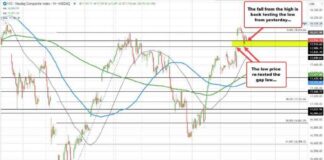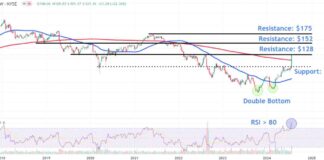July Home Sales Show Signs of Recovery After Five-Month Decline
In a promising turn of events, closed sales of previously owned homes experienced a 1.3% increase in July compared to June, reaching a seasonally adjusted, annualized rate of 3.95 million units, according to the National Association of Realtors (NAR). This uptick marks the first gain in five months, offering a glimmer of hope for the real estate market amidst recent challenges.
Despite this positive development, sales were still 2.5% lower compared to the same time last year. However, the Northeast region saw the biggest gains in sales, while the Midwest remained relatively stable. Additionally, prices showed a notable increase in the Northeast, indicating regional variations in market dynamics.
Lawrence Yun, the NAR’s chief economist, commented on the recent sales data, stating, “Despite the modest gain, home sales are still sluggish. However, consumers are beginning to see more choices, and affordability is improving due to lower interest rates.” This observation highlights the impact of interest rate fluctuations on consumer behavior and market trends.
The sales data for July reflects contracts likely signed in May and June, a period when mortgage rates were above 7% for the popular 30-year fixed loan. As rates began to decline in July, hovering around 6.5%, it is evident that shifting financial conditions have influenced buyers’ decisions and market activity.
Notably, all-cash offers accounted for 27% of July sales, a slight increase from the previous year and significantly higher than historical norms. This trend underscores the diverse financing options available to buyers and the prevalence of cash transactions in the current market environment.
Moreover, the supply of homes for sale continued to increase in July, with 1.33 million houses on the market by month-end. This represented a 0.8% uptick from June and a significant 19.8% rise compared to July 2023. Despite the growing inventory, the market maintained a four-month supply at the current sales pace, indicating ongoing demand for housing.
While the rise in supply did not lead to a cooling of home prices, the median price of an existing home sold in July reached $442,600, reflecting a 4.2% year-over-year increase. This trend highlights the persistent upward pressure on prices in the real estate market, driven by various factors such as limited inventory and strong buyer demand.
First-time buyers accounted for 29% of sales in July, remaining unchanged from June but down from 30% in July 2023. Historically, first-time buyers typically represent a larger share of home sales, closer to 40%. However, challenges related to affordability, including rising home prices and mortgage rates, have impacted this segment of buyers in recent years.
With mortgage rates now slightly lower, demand for housing is beginning to rebound. A recent report from Redfin, a real estate brokerage, revealed a 4% increase in requests for tours and buying services from Redfin agents over the last week, reaching the highest level in two months. This uptick in buyer activity signals a potential resurgence in the market.
In conclusion, the real estate market showed signs of recovery in July following a five-month decline in home sales. While challenges persist, such as affordability concerns and price pressures, the recent uptick in sales and buyer interest offer hope for a more robust market outlook in the months ahead.
Market Insights and Analysis
As the real estate market continues to navigate through fluctuations and challenges, it is essential to consider various factors influencing buyer behavior and market dynamics. From interest rate trends to regional variations in sales performance, a comprehensive analysis of market insights can offer valuable perspectives on the current state of the housing market.
Interest rates play a significant role in shaping the affordability and attractiveness of homeownership for buyers. The recent decline in mortgage rates, from over 7% to around 6.5%, has contributed to improved affordability and increased buyer interest. Lower rates reduce the cost of borrowing, making homeownership more accessible to a broader range of potential buyers.
Regional trends in home sales highlight the diverse nature of the real estate market across different areas. While the Northeast experienced significant gains in sales and price increases, the Midwest remained relatively stable. Understanding these regional variations can provide valuable insights for buyers, sellers, and industry professionals seeking to navigate the market effectively.
The rise in all-cash offers in July underscores the importance of financing options in real estate transactions. Cash transactions offer advantages such as faster closings and greater flexibility for buyers. The increase in all-cash offers signals a growing preference for this type of transaction, reflecting the evolving preferences and strategies of buyers in the current market environment.
The supply of homes for sale plays a crucial role in shaping market conditions and price dynamics. The increase in inventory in July, coupled with a steady sales pace, suggests a balanced market with opportunities for both buyers and sellers. However, the persistent upward pressure on prices indicates ongoing challenges related to supply constraints and strong demand.
First-time buyers represent a vital segment of the real estate market, driving demand and contributing to market activity. While affordability concerns have impacted this group in recent years, lower mortgage rates are starting to alleviate some of these challenges. Monitoring the participation of first-time buyers can offer insights into the overall health and sustainability of the housing market.
Outlook and Future Trends
Looking ahead, the real estate market is poised to navigate through a period of transition and adaptation as it responds to changing economic conditions and consumer preferences. Several key trends and developments are likely to shape the market outlook in the near term and beyond, influencing buyer behavior, pricing trends, and overall market dynamics.
The impact of interest rates on the housing market is expected to remain a central consideration for buyers and industry stakeholders. As mortgage rates fluctuate in response to economic conditions and policy changes, buyers will continue to assess the affordability of homeownership and make decisions based on prevailing interest rate trends.
Regional variations in market performance are likely to persist, reflecting the unique characteristics and dynamics of different housing markets across the country. Understanding these regional nuances can help buyers and sellers navigate local market conditions effectively, leveraging opportunities and mitigating risks associated with specific geographic areas.
The prevalence of all-cash offers in real estate transactions underscores the importance of financing options and payment methods in influencing buyer behavior. As cash transactions continue to play a significant role in the market, buyers and sellers must be aware of the implications and advantages associated with different financing strategies.
The supply of homes for sale will remain a critical factor shaping market conditions and price dynamics in the coming months. Balancing supply and demand is essential for maintaining a healthy and sustainable real estate market, ensuring that buyers have access to a wide range of housing options while sellers can achieve fair market value for their properties.
First-time buyers are expected to play a crucial role in driving demand and market activity, particularly as affordability concerns ease with lower mortgage rates. Monitoring the participation of first-time buyers and their impact on the market can provide valuable insights into broader trends and patterns shaping the real estate landscape.
In conclusion, the real estate market is showing signs of resilience and recovery following a period of decline in home sales. By staying informed about market insights, regional trends, financing options, and future outlook, buyers, sellers, and industry professionals can navigate through challenges and capitalize on opportunities in the evolving real estate landscape.

















